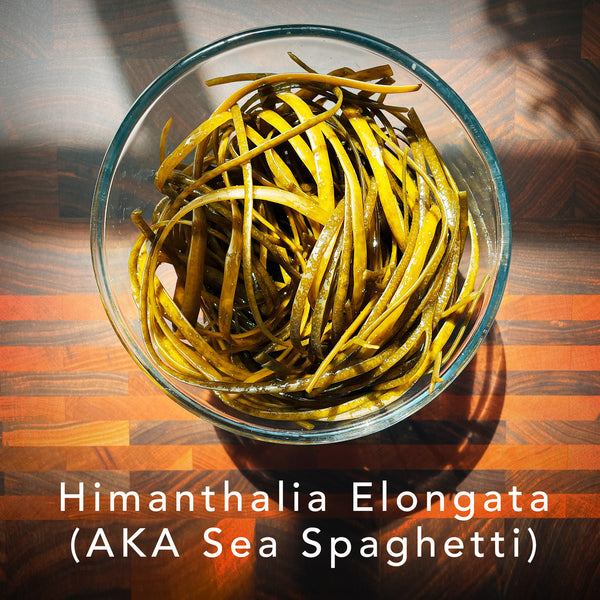Sea Spaghetti With Pesto And Mackerel

Introduction
Despite repeated endorsements from chefs, food writers, and nutritionists over the last decade, seaweed has proven to be a hard sell to UK consumers. We can kind of see why. Most people’s only interaction with it is limited to the smelly, rotten stuff at the high tide line or on the conveyor belt at their local YO! Sushi.
It doesn’t have to be that way, though. The UK boasts an incredible variety of seaweeds, and even though the word ‘superfood’ is bandied around a little too often for our liking, if any foodstuff deserves it, then seaweed does.

All the seaweed varieties you find in this country (except for one, which you’d have to invest in diving gear to get close to) are edible, nutritious, plentiful, and, of course, completely free.
This is not to say they are all delicious. However, dulse, kelp, laver, and the seaweed we’re using today, Himanthalia Elongata (AKA sea spaghetti), most certainly are.
As for mackerel, well, this beautiful oily fish is not just sustainable, affordable, and packed full of omega 3, it also tastes amazing. No wonder it's the favourite fish of Michelin-starred chefs like Nathan Outlaw.

Pro tip
If your dinner guests are freaked out by the idea of eating seaweed, tell them that if they eat any processed foods, there’s a strong probability they’ll already have eaten some this week. That will be thanks to the inclusion of seaweed carragheen, which is widely used as a thickener and stabiliser in lots of foods, including ice cream.
Ingredients for two
| Sea spaghetti | 200g |
| Pesto | 100g |
| Mackerel | x2 fillets |
| Lemon | x1 |
| Parmesan | to taste |
| Seasoning | to taste |
| Rapeseed oil | as needed |
Method
We’re not going to get into the nitty-gritty of how to forage or prepare seaweed because there are plenty of instructions online. However, if you’re starting with fresh sea spaghetti, we’d recommend a thorough wash followed by a 10-15 minute soak in lemon juice. This will not only add flavour but also tenderise it. If you're starting with dried seaweed, then you'll need to simply rehydrate according to the pack instructions.
Lightly salt a pan of water, add the seaweed, and set a timer for 12 minutes.
While the spaghetti is cooking, heat an oiled, non-stick pan until ripping hot, season your mackerel fillets, and fry for 2-3 minutes, skin side down.
Flip the fillets and cook for 1 more minute. Transfer them to a chopping board and either shred or keep whole, you choose.
When the spaghetti is al dente, drain and stir through the pesto. Arrange the mackerel on top and serve with lemon wedges and a generous amount of Parmesan.
Bonus tip
To prolong the shelf-life of your precious haul, consider dehydrating it. You can buy a dedicated dehydrator, but all you really need to do is place the sea spaghetti in an oven on the lowest possible setting with the door open. Check regularly to see how dry it is getting because it can take anything from 2-4 hours, depending on the conditions. Once fully dehydrated, pop the spaghetti in an airtight container where it will last for at least a year. Simply rehydrate it before cooking by soaking it in water for an hour.

